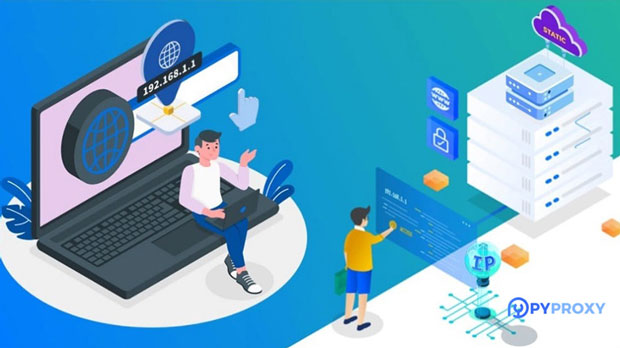A proxy in the context of the Internet of Things (IoT) refers to an intermediary system that facilitates communication between IoT devices and the network. It acts as a gateway or buffer, controlling and securing data flow, enabling devices to connect to various services or networks. In the world of IoT, proxies are essential for enhancing security, improving performance, and enabling efficient management of IoT ecosystems. They help address common challenges like data privacy concerns, network congestion, and device compatibility, making them crucial in a connected world where millions of devices communicate simultaneously. Understanding Proxies in IoTIn simple terms, a proxy is an intermediary server or software that acts between an IoT device and the services it communicates with. The proxy can modify, redirect, or secure the data exchanged between these entities, ensuring that communication is efficient, secure, and optimized. In IoT, devices typically have limited resources and may face connectivity issues due to network constraints. A proxy helps overcome these limitations by providing additional layers of security, network traffic management, and sometimes even device authentication.Proxies in IoT can be categorized into different types based on their functionality:1. Forward Proxy: This type of proxy forwards requests from IoT devices to the internet or external servers. It can be used for load balancing, security filtering, or caching responses from the server to optimize performance.2. Reverse Proxy: In contrast to a forward proxy, a reverse proxy acts as an intermediary between the internet and a set of IoT devices. It is typically used to manage and distribute incoming traffic to different IoT devices or services, ensuring better load balancing, enhanced security, and easier maintenance.3. Transparent Proxy: A transparent proxy intercepts data without requiring modification on the client side. This is particularly useful in monitoring or controlling IoT device traffic, ensuring that devices don’t need to be reconfigured to work with the proxy.4. SOCKS Proxy: This type of proxy provides more flexible routing of network traffic and can be used to relay traffic between IoT devices over various protocols. It is often used in scenarios where the network environment is complex or non-standard.Role of Proxies in Enhancing Security in IoTOne of the primary reasons for using proxies in IoT networks is security. IoT devices, especially those deployed in remote or sensitive environments, can be vulnerable to various types of cyberattacks. Proxies help mitigate these risks in several ways:1. Encryption and Data Privacy: Proxies can encrypt communication between IoT devices and external networks, ensuring that sensitive data is protected during transmission. For instance, a proxy can ensure that all data sent from a device to a cloud service is encrypted, preventing unauthorized access during transit.2. Access Control: Proxies can enforce strict access control policies. They can limit which devices or users can communicate with specific IoT devices, ensuring that unauthorized or malicious devices are blocked from accessing the network.3. Anonymity and IP Masking: By acting as intermediaries, proxies can hide the real IP addresses of IoT devices. This ensures that even if a malicious entity tries to compromise the IoT device, they cannot directly trace its physical location, adding a layer of anonymity and protection.4. Traffic Filtering: Proxies can filter network traffic, blocking potentially harmful data packets that might contain malware or other malicious payloads. This is particularly important in IoT networks where devices are often limited in terms of computing power to defend themselves.Improving Performance and Reducing LatencyAnother key benefit of using proxies in IoT is performance improvement. IoT devices often generate massive amounts of data and need to communicate frequently with cloud servers or other devices. Without optimization, this can lead to network congestion, slowdowns, or even failures in communication. Proxies help to alleviate these issues in several ways:1. Caching: A proxy can cache frequently requested data, such as configuration files or sensor readings, reducing the need for IoT devices to repeatedly send requests to external servers. This helps reduce latency and speeds up response times.2. Load Balancing: Proxies can distribute incoming traffic evenly across a set of IoT devices or servers. This ensures that no single device is overwhelmed with requests, leading to better system stability and performance.3. Compression: Some proxies offer data compression services, reducing the size of data transferred over the network. This is particularly useful for IoT devices with limited bandwidth, ensuring that large amounts of data can be transmitted more efficiently.4. Bandwidth Optimization: Proxies can prioritize traffic, ensuring that critical data packets are transmitted first, while less urgent communication is delayed or deferred. This is especially important in environments where bandwidth is limited or expensive.Device Management and IoT Network IntegrationProxies also play a significant role in managing IoT devices and integrating them into larger networks. Many IoT deployments consist of a variety of devices that may not always be compatible with each other. Proxies provide a unified point of control, enabling better management of IoT ecosystems.1. Protocol Translation: IoT devices often use different communication protocols (e.g., MQTT, HTTP, CoAP). A proxy can act as a translator, converting messages from one protocol to another, allowing devices that use different protocols to communicate seamlessly.2. Centralized Monitoring: Proxies can aggregate data from multiple IoT devices, allowing for centralized monitoring and analysis. This makes it easier for administrators to detect issues, track performance, and ensure that all devices are functioning correctly.3. Firmware and Software Updates: Managing software and firmware updates for a large number of IoT devices can be challenging. Proxies can help streamline this process by distributing updates to devices efficiently and securely, without the need for each device to directly communicate with the update server.4. Scalability: As IoT networks grow, it becomes increasingly difficult to manage each device individually. Proxies provide a scalable solution, ensuring that additional devices can be added to the network without overwhelming the system’s capabilities.Challenges and Future Outlook for Proxies in IoTDespite the numerous advantages, there are still challenges associated with using proxies in IoT environments. For instance, deploying proxies introduces an additional layer of complexity to the network, requiring proper configuration and maintenance. There are also potential latency issues, as data must pass through an extra intermediary before reaching its destination.Looking ahead, the role of proxies in IoT is expected to grow. As IoT networks become more complex and as the number of connected devices increases, proxies will play a crucial role in ensuring the scalability, security, and performance of these networks. With advancements in artificial intelligence and machine learning, future proxies may be able to automatically optimize traffic flow, detect anomalies in real-time, and even predict potential issues before they arise.Proxies are an essential component of modern IoT networks, offering significant benefits in terms of security, performance, device management, and network integration. By acting as intermediaries, they help address many of the challenges posed by the growing number of connected devices. As IoT continues to evolve, the role of proxies will only become more critical in ensuring the smooth and secure operation of IoT ecosystems.
Jun 23, 2025



































































